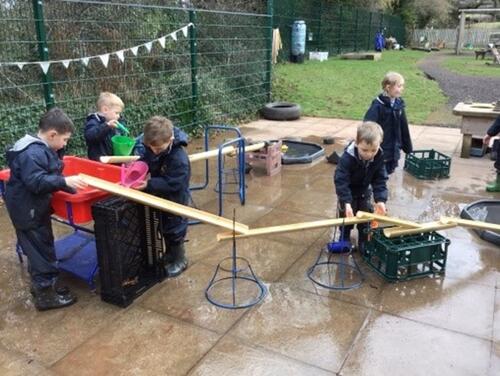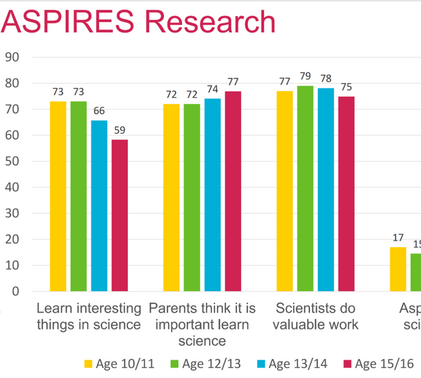
National research into 10-16 year olds by the ASPIRES programme shows that very few are interested in pursuing a career in the Sciences despite considering that Scientists do valuable work. Equally, there is a current shortfall of 173,000 skilled workers in Science, Technology, Engineering and Maths (STEM) businesses in the UK - and yet STEM roles and job opportunities are expected to double within the next decade (www.STEM.co.uk). Inspired by these alarming statistics, the Sidcot School Junior School team were driven to inspire a generation of budding engineers and scientists, ensuring that all of our children have an understanding of what it is to design, build and create.
Building on the Junior School STEM curriculum
In order to create an engaged, excited and knowledgeable STEM workforce, we must first encourage a love of learning and appreciation for STEM. We have found that a love of learning generally comes from a child being inspired to find out more about something that interests them and our Sidcot Learning Wheel skills such as curiosity, resilience, collaboration and thinking skills play directly into the core engineering values as stated by EHoM (Engineering Habits of Mind)… a match made in heaven!
Armed with the knowledge that child-led processes have the most success in inspiring a love of learning, the Sidcot Junior School team developed a series of STEM-focused projects based on their pupils’ current areas of interest. Around the School, the children were given age-appropriate projects to work on in teams, to design and create products. The wide-range of topics - from weather to food and rivers to construction - was embraced by all. Our School’s Quaker principles were also at the forefront, with learning about sustainable eating, the impact of palm oil usage on the orangutans and looking after our environment, built into the projects.
Cath Dykes, Head of the Junior School said, “With STEM learning, the main emphasis is on process and children testing their ideas to overcome challenges for themselves. Our STEM projects were designed by our teachers to be full of research, practical tasks, collaboration and communication. This links so well with the Sidcot Wheel skills and have certainly developed the children’s resilience, pro-activity and curiosity to find things out for themselves, equipping them to be successful in their future lives.”
A deeper-dive into our projects is below:
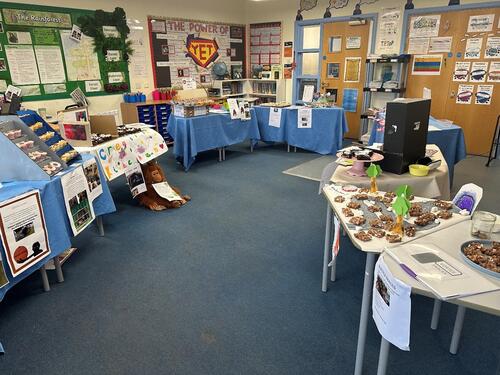
J6: Saving the Orangutans
The Year 6 children at Sidcot Junior School have been learning about the Rainforest and Deforestation, and were saddened by the loss of the orangutan’s habitat. So they designed their week’s STEM project to raise money for the Orangutan Foundation charity.
First, the children spent a week setting up team businesses and doing market research into consumer cake and biscuit preferences. They then analysed the data and decided on a product that would allow for the greatest number of sales and margin for profits. In groups, they all made ‘Palm oil free’ products, which they advertised to the School community.
The children made packaging and arranged a cake sale after School on the final day of their STEM project week, at which they also showcased their business folders. In total, they spent £73 on ingredients, and made £330 profit (which they counted up) for the Orangutan Foundation. Their incredible fundraising will be showcased in the Foundation’s biannual newsletter, ‘Red Ape’.
Commenting on the experience, Finley said, “I can’t believe we managed to come up with businesses, research and make our cakes in just one week! It’s been really full-on but it’s definitely all been worth it to see how much of a difference we could make when we are determined to help something we care about. I’m really proud of everything we did.”
J5: Healthy Eating, with Inspiration from the Ethicurian Restaurant
During a visit to The Ethicurean Restaurant in Wrington, which has a green Michelin star, Head Chef Mark McCabe treated our J5 students to a tour of their walled garden, explained their sustainability philosophy and gave them an impromptu lesson on photosynthesis. Inspired by what they saw (not to mention tasted!), the children created health eating menus for their STEM week. This involved devising a healthy menu (soup, wraps, and baked apples, for which they adapted pre-written recipes), practising their chopping and grating skills, and cooking their feast for the whole year to enjoy! They reflected on the results, deciding what they might do differently next time, or at home.
J4: Tracking Oil Pollution on Rivers and Oceans
Our J4 students designed and made model rivers in teams for their STEM project, in which water had to meander and course from one end to the other of the model. Provided with different materials, they then had to test the most effective course while building. Then – disaster struck, in the form of an oil spill. The children had to research and record the most effective means of cleaning up the river, using various means to do so. This provided the perfect opportunity to reflect on our sustainability values, and the effect of oil pollution on our rivers and oceans.
J3: Pneumatic River Monsters!
Our J3 children researched, designed and created Pneumatic River Monsters, calling on their engineering skills to develop different ways in which parts of them could move. They took their models to the Reception classroom, where the children were building rivers, to test them out!
J2: Adapting the Three Little Pigs Story for STEM
Lower down the School, the J2 teachers were inspired by the children’s interest in the Three Little Pigs story to develop an engineering project based on this theme. The pupils were encouraged to design, build, test and evaluate straw, stick and brick houses (built in pairs using child-friendly cement that will dissolve, meaning the materials are reusable for future projects). A roof was built using material that the children sewed together and covered in wax for waterproofing. Their creations were then shown to parents at an end of week ‘Showcase’.
Commenting, Rafe, J2 said, “I was sad because our brick house kept falling down and the bricks wouldn’t stick together properly. But then our teacher reminded us that we are engineers because we keep going and never give up, and learn from our mistakes. If something didn’t work, we tried again.”
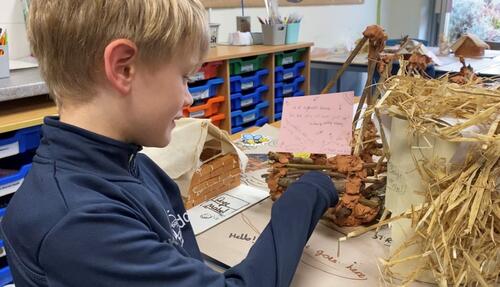
J1: Tracking the Weather
Inspired by the children’s love of the outdoors, the J1 teacher focused on the weather for their project. Students were encouraged to measure rainfall throughout the week, and illustrate this on their measurement charts. They thought about other ways in which they could measure different types of weather, designing and creating paper windmills, then testing their hypotheses outdoors.
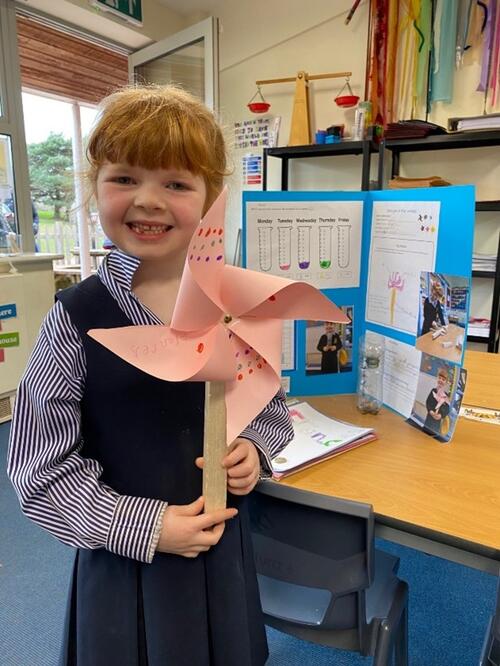
Reception: Building Rivers and Waterfalls
Our Reception engineers began STEM week by sharing The River Story, a beautiful picture book depicting how a river begins and ends. The River Story sparked the children’s imaginations as they created their own rivers and waterfalls through outdoor water play, setting up funnels through which the water could course. The children needed to communicate and collaborate to ensure the river travelled from the mountain and ended in the sea. Meanwhile, the J3 children visited to share their designs for their pneumatic river monsters and wonderful stories so they decided to make a large river to display the river monsters. They created a small-scale river first, before the children designed a large-scale river model. The result was fantastic!
During outdoor playtime, Dave the Gardener told Reception all about how he re-vamped our School pond. He told them some interesting facts, showed them some algae and let them feed the fish!
